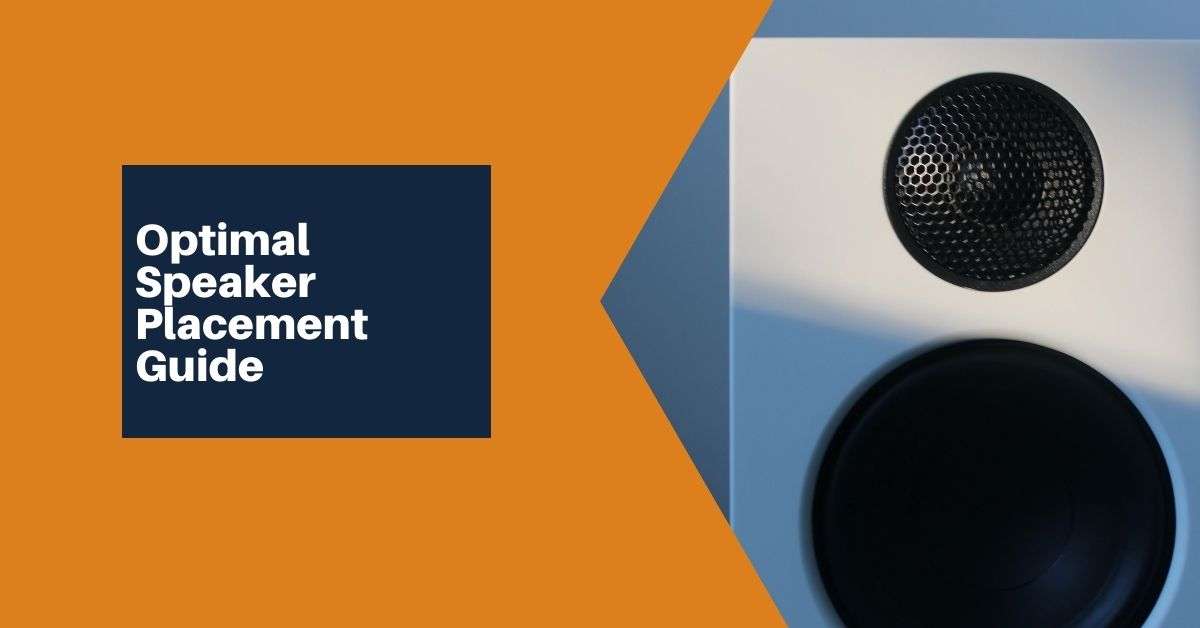Speaker placement plays a huge factor in overall sound quality and can be the difference in your music sounding amazing or flat. Audiophiles around the world have meticulously tested various styles and setups but ultimately have landed on a few best position practices that make speakers sound great.
Want to know the best part about speaker placement? It’s free! You too can start fine-tuning your listening space to get the best possible sound.
In this guide, we’ll cover everything you need to consider when adjusting speaker placement as well as some nifty tips and tricks.
Table of contents
- Why is speaker placement important?
- What does ideal speaker placement look like?
- 5 factors to consider when placing stereo speakers
- Subwoofer placement
- How to arrange the room for the best speaker placement?
- Reducing reflections
- Speaker stands: are they necessary?
- Speaker placement simulator
Why is speaker placement important?
Even if you have the highest quality speakers on the market, without proper placement your expensive investment won’t be living up to its fullest potential. Adjusting your speaker listening position can provide a noticeable improvement to the quality of your sound and overall listening experience.
Proper speaker placement is all about adapting your audio listening space to the room it’s in. Whether your speakers are in a living room, bedroom, basement, or home theater, finding the sweet spot is sure to improve your sound.
What does ideal speaker placement look like?
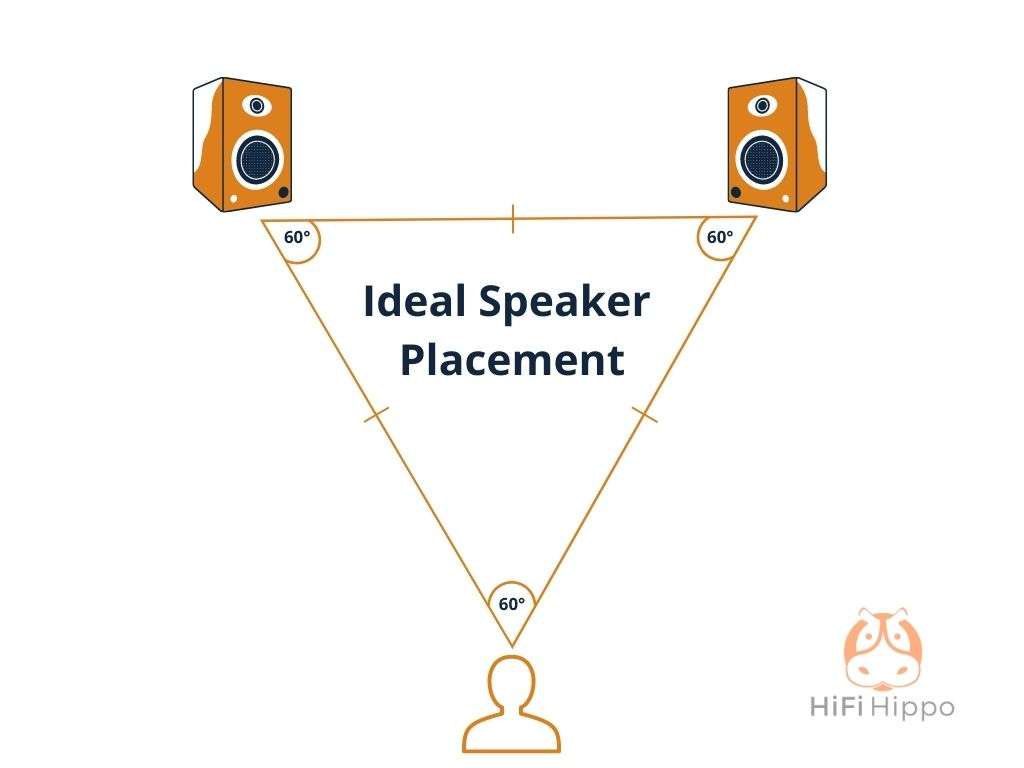
Audio engineers and enthusiasts have found that the relationship between stereo speakers and the listener should resemble the shape of an equilateral triangle. This helps to create an ideal stereo image where audio sounds balanced, clear, and dynamic.
Let’s look further into how to achieve this placement as well as other factors to consider when adjusting your speakers.
5 factors to consider when placing stereo speakers
There are five primary factors to consider when it comes to proper speaker placement. Finding your room’s ideal listening position will require fine-tuning of these five factors.
Speaker angle
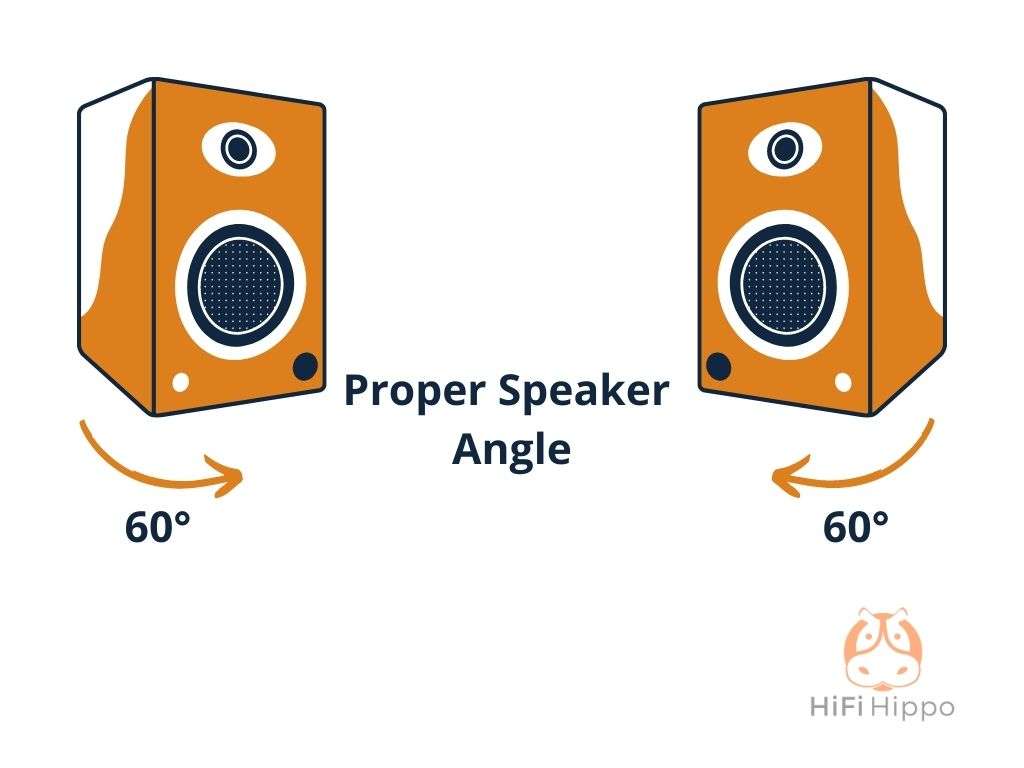
Should you angle speakers? This quick answer is yes.
In order to achieve proper speaker placement, it’s suggested speakers be angled inward, also called “toe-in.” Toe-in speakers direct the sound right to the listener’s head, and more importantly ears.
Specifically, both speakers should be placed at a 60-degree angle to the center listening position.
Speaker separation
Many people wonder how far apart speakers should be. The answer depends on the room they’re in.
A basic rule is to place speakers the same distance apart as they will be from where the listener is seated. This means that if the listener is 8 feet from one of the speakers, each speaker should be 8 feet apart from the other.
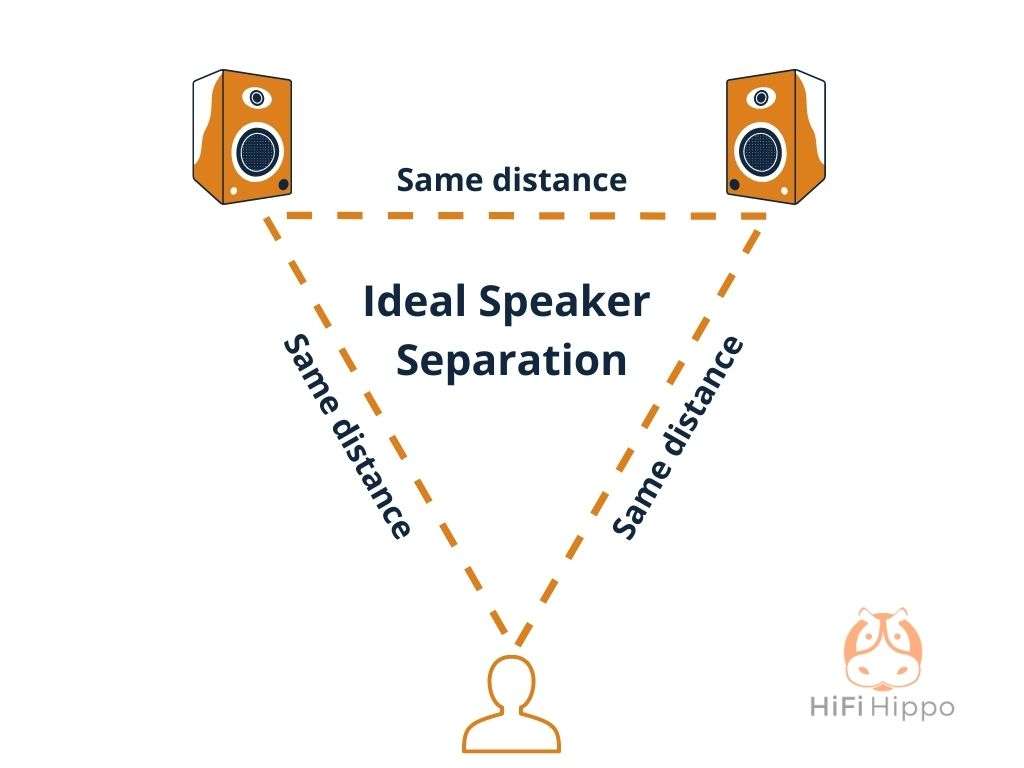
It’s generally suggested that bookshelf speakers be at least 4 feet apart and floorstanding speakers 8 feet apart (this will sometimes be addressed in your speaker manual). Do be careful not to place the speakers too far apart as this can create stereo image issues.
Obviously, the dimensions of your room will ultimately dictate your stereo separation. If you can’t quite hit the equilateral triangle golden rule, that’s okay – just be sure to adjust your speaker angle to account for it.
Speaker height
Most speakers should be set to ear level height which is typically 36 to 38 inches from the ground. The speakers’ tweeter (the smallest driver in the speaker that produces high frequencies) should match ear level.
Speaker distance to the back wall
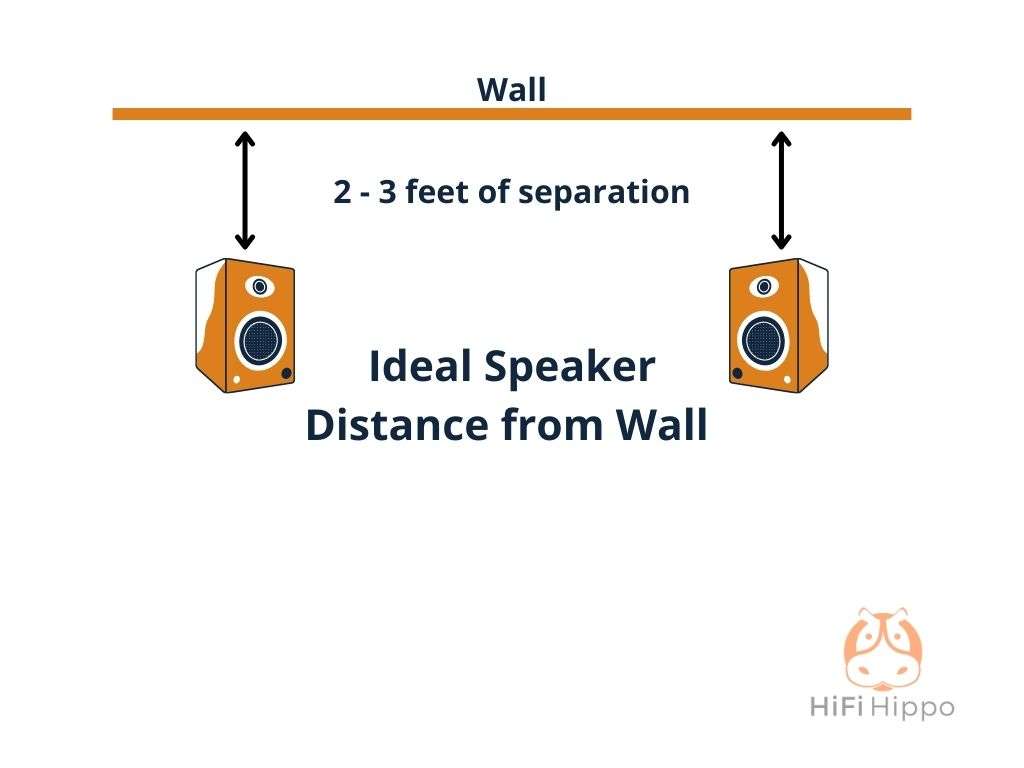
There should be 2-3 feet of distance between a speaker and the wall behind it. This helps minimize reflections and muddy low frequencies as well as helps reduce phase issues, especially in rear-ported speakers.
Speaker isolation
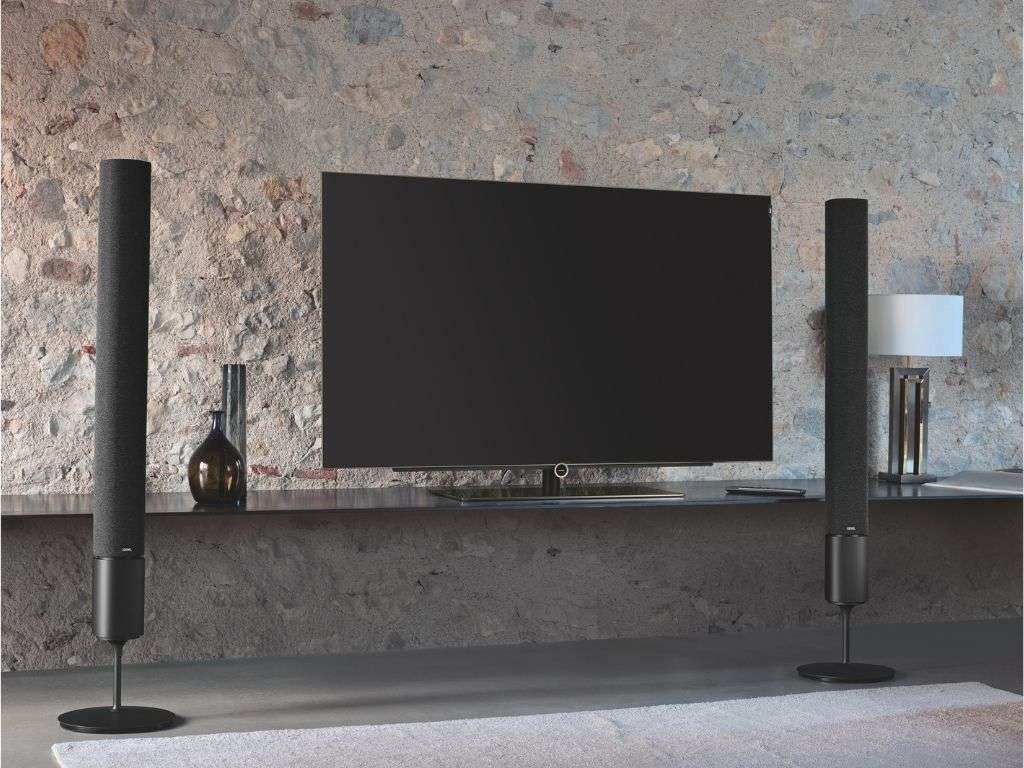
It’s important to place your speakers away from the rest of your audio system. Bass frequencies can jostle equipment like turntables and stereos, negatively affecting sound quality and sometimes damaging them.
Furthermore, speakers ideally should be placed on a softer surface to absorb certain frequencies that can resonate poorly.
Subwoofer placement
If you’ve incorporated a subwoofer into your speaker system, it’s also important that you find an optimal placement for it as well. We recommend trying different areas of the room to see what sounds best.
Keep in mind, placing a sub near a wall will typically increase the bass response. Use this as a tool to craft the sound to your liking.
How to arrange the room for the best speaker placement?
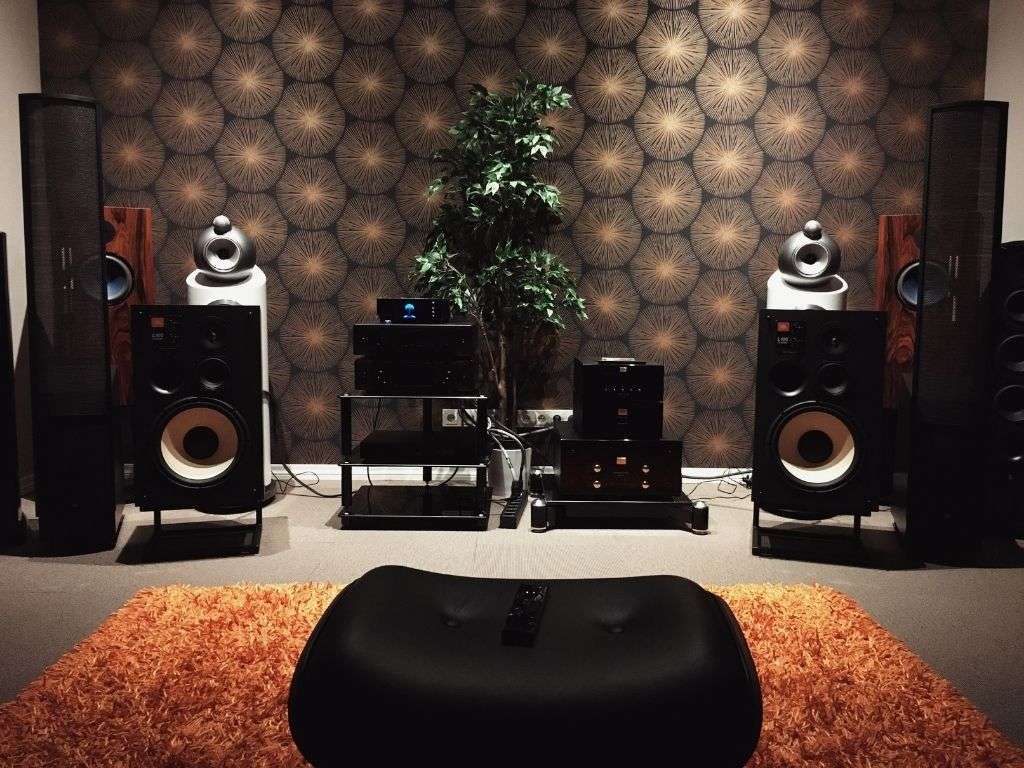
When it comes to the room your speakers are in, it’s important to make sure that there are no objects between the speakers and your ears. Objects such as a coffee table can cause reflections in the audio.
Also, consider what furniture you’ll be listing to music in and center that up in between your speakers. For example, if you have a 7-foot long couch, ensure that the central point (3.5 feet) is also in the center of your speakers.
A word of advice: if your audio room doubles as a living room or bedroom, don’t force the entire layout to cater to your speakers. It’s important that your room remain comfortable, otherwise, you may never want to use it!
Reducing reflections
When you’re listening to music, you aren’t just hearing the sound of your speakers. While the sound coming from your speakers makes up a lot of the listening experience, there are also reflections from the audio bouncing off of walls, wooden floors, furniture, and other objects in the room.
Reflected sound waves arrive at your ears after the direct sound comes from the speakers. If there are too many reflections, this can muddy your listening experience with excessive mid-range tones, damaging the stereo image.
The best way to reduce reflections is to keep speakers away from walls. Ensure each speaker has room to breathe between the back wall and the side wall next to it.
Additionally, soft objects such as a couch or carpet can help absorb reflections. If you have wooden floors, a rug in front of the speakers can do wonders as well.
Lastly, acoustic treatment panels can be added to the wall to further reduce reflections.
Speaker stands: are they necessary?
Additionally, speaker stands help with isolation and can even be used to hide speaker cables.
Speaker placement simulator
If you’re trying to figure out where to place your speakers, there are some helpful speaker placement simulators you can use. Simply add in the dimensions of your walls and the calculator will display the recommended sweet spot for the most optimal stereo image.
Final thoughts: speaker placement
As you can tell by now, speaker placement plays a huge role in getting better sound from your speakers. While we understand that not everyone has dedicated listening rooms, hopefully, the tips and tricks in this guide help improve your listening experience.

Lead Editor / Owner
After beginning his career in the video and audio recording industry, Andrew started HiFi Hippo to share his knowledge and passion for vinyl and vintage audio with other readers.
